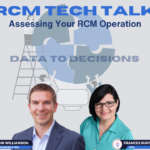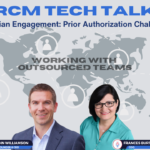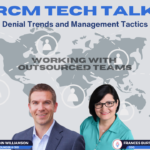Introducing a Revolutionary Strategy
As healthcare finance becomes increasingly complex, traditional AR workflow strategies are showing their limitations. Enter the Assembly-Line Approach: a revolutionary method that promises to boost efficiency, improve cross-training, and increase overall throughput in revenue cycle management.
Breaking Down the Assembly-Line Approach
This new strategy divides AR workflow into three distinct phases:
Research Phase
- Gathering supporting documentation
- Summarizing relevant information
- Verifying eligibility and authorizations
- Classifying denials
- Tracking down the EOB/Remit
Decision Phase
- Determining appropriate actions (appeal, correct claim, write-off)
- Leveraging experienced staff expertise
- Making rapid decisions based on summarized information
Response Phase
- Executing decided actions
- Submitting corrected claims or appeals
- Updating patient accounts
- Implementing automated responses where appropriate
Benefits of the Assembly-Line Approach
This approach offers several key advantages over traditional methods:
- Optimized skill allocation: Each phase requires different skills, allowing staff to focus on tasks best suited to their expertise.
- Improved cross-training in Assembly-Line Approach: Team members can rotate through different phases, broadening their knowledge and skills.
- Increased throughput: By streamlining the process, organizations can handle a higher volume of claims more efficiently.
- Measurable output of Assembly-Line Approach: Each phase produces clear, quantifiable results, making it easier to track performance and identify areas for improvement.
- Automation opportunities: Certain tasks, particularly in the research and response phases, can be automated to further increase efficiency.
Implementing the New Workflow with Assembly-Line Approach
Successful implementation of this approach involves carefully assigning tasks based on skill level and experience:
- Junior staff or those with extra capacity handle the research phase, gathering all necessary information.
- Experienced staff members focus on the critical decision-making phase, leveraging their expertise to determine the best course of action for each claim.
- Designated team members or automated systems execute the responses, ensuring timely follow-up on all decisions.
Organizations implementing the approach have reported significant efficiency gains. Some have increased their daily claim processing capacity from 20-25 to 100 claims. This dramatic improvement stems from the focused allocation of resources and expertise at each stage of the process.
By allowing experienced staff to focus solely on decision-making, organizations can maximize the impact of their most valuable team members. Meanwhile, junior staff gain exposure to a wide range of scenarios, accelerating their learning and development.











